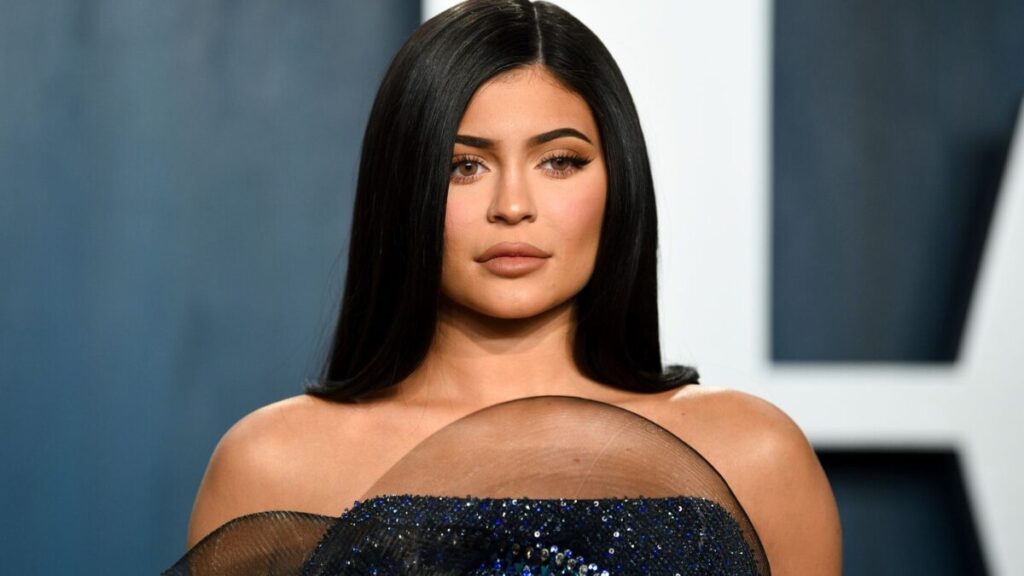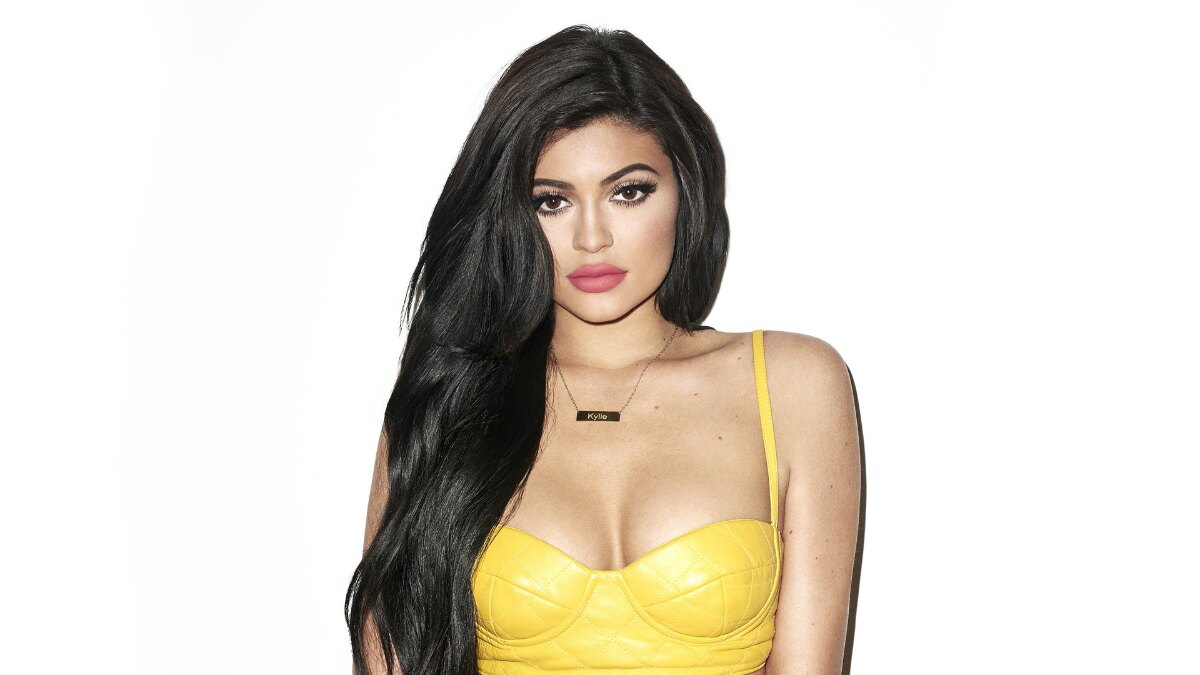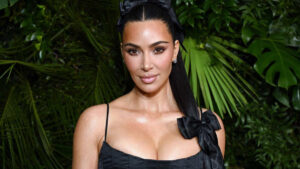No boardroom. No MBA. No decades-long grind through corporate ladders.
Kylie Jenner built a multi-billion-dollar beauty empire with a single Instagram post and a $29 Lip Kit. At 18, she launched a direct-to-consumer cosmetics brand from her bedroom. By 21, she’d inked a $600 million deal with Coty Inc. And in 2025, her estimated net worth sits at a staggering $700 million, cementing her status as one of the youngest self-made moguls in modern history—despite what the internet has to say about that title.
Her rise didn’t follow the script. Critics dismissed her as a reality TV product, a lucky beneficiary of a famous last name. But behind the memes and makeup filters was a sharp instinct for branding, timing, and virality—traits no MBA can teach.
This isn’t just a story about lipstick and selfies. It’s about influence as capital, brand ownership as power, and how one of the internet’s most-watched women turned fleeting attention into generational wealth. Here’s how Kylie Jenner rewrote the playbook—and why her 2025 net worth isn’t just a number, but a signal of what the future of entrepreneurship looks like.
The 2025 Snapshot: What Is Kylie Jenner’s Net Worth Today?
As of 2025, Kylie Jenner’s net worth is estimated to be $700 million, according to Celebrity Net Worth, which famously included and then removed her from its billionaire list in 2020, now places her back near the threshold, citing renewed growth in her beauty ventures and evolving digital revenue streams. Celebrity Net Worth, meanwhile, pegs her fortune slightly higher, factoring in recent real estate acquisitions and growing returns from her brand partnerships.
The core of Jenner’s wealth still stems from Kylie Cosmetics, the beauty brand she launched in 2015 and partially sold to Coty Inc. in a landmark 2019 deal worth $600 million. Although she retained a minority stake, that transaction alone catapulted her into the ranks of the ultra-wealthy. In the years since, the brand has expanded into skincare, collaborations, and limited-edition drops—now operating more like a luxury digital house than a one-product wonder.
But her portfolio has grown beyond blush palettes. In 2025, a significant portion of Kylie’s net worth comes from her social media empire, where a single sponsored post can fetch upward of $1.5 million, according to industry estimates. Add to that her real estate holdings, fashion brand earnings, and equity in various startups, and Jenner’s empire looks less like a celebrity side hustle and more like a Gen Z Fortune 500.
Her fortune isn’t just massive; it’s modular, diversified, and remarkably modern. That’s what makes the 2025 snapshot so telling: it’s not just about how much she’s worth—it’s about how many ways she’s earning.
To understand how Kylie Jenner’s net worth evolved from 2012 to 2025, we’ve mapped every major deal, launch, and pivot across her journey.
From Teen Star to Tycoon: Kylie’s Early Money Moves
Before there was a billion-dollar cosmetics line, there was a teenager learning to turn camera time into currency. Kylie Jenner’s financial evolution didn’t begin with business school spreadsheets—it started in the shadow of a family that understood the economics of fame.
By the time she was 10, Kylie was appearing regularly on Keeping Up with the Kardashians, a reality show that wasn’t just about drama—it was about monetizing attention. Under the guidance of her mother and manager, Kris Jenner, Kylie inked early endorsement deals and began cultivating her image long before influencer culture was fully mainstream. Unlike her sisters, who leaned into fashion or media, Kylie watched and waited, often taking the quieter route—until she didn’t.
Her first ventures were small but strategic: brand partnerships with PacSun and a co-branded fashion line with Kendall. Then came the realization that owning a brand beat promoting one. While other celebrities sold their image, Kylie began laying the groundwork to sell a product.
What looks, in hindsight, like instinct was really the product of immersion. Growing up inside the machinery of celebrity entrepreneurship gave Kylie a playbook—and by her late teens, she was rewriting it with her name on the front.

The Lip Kit That Launched a Billion-Dollar Brand
The idea was deceptively simple: take Kylie Jenner’s signature matte lip look and package it into a product. But behind the scenes, Kylie Cosmetics was engineered more like a lean tech startup than a celebrity vanity project.
In 2015, at just 18, Kylie quietly funded the first run of 15,000 Lip Kits—a liquid lipstick and lip liner duo priced at $29. With no brick-and-mortar presence and zero traditional advertising, she partnered with Seed Beauty, a private-label manufacturer known for fast product turnaround, and launched exclusively online through Shopify. The inventory sold out in under a minute.
This wasn’t luck. Kylie had spent months teasing the Lip Kits to her massive Instagram following, stoking curiosity and urgency. She didn’t just create a product—she created demand. The drop model mimicked streetwear hype: limited quantity, high interest, and zero guarantees of restock. It was influencer-era scarcity marketing at its sharpest.
While celebrity beauty lines had historically leaned on licensing deals or department store placement, Kylie’s direct-to-consumer (DTC) model gave her control over pricing, brand voice, and customer data. It also gave her credibility with a new generation of beauty buyers who valued authenticity and speed over polish.
In a 2018 interview, she reflected: “I didn’t expect it to be this big. I was just obsessed with makeup and wanted to start something of my own.” That obsession, paired with digital fluency, turned her into not just a founder, but a force
For a deep dive into Kylie Cosmetics’ rise and current brand valuation, explore how her beauty line evolved into a billion-dollar disruptor.
The Coty Deal & Beyond: Monetizing the Brand at Scale
In late 2019, Kylie Jenner made the kind of move that separates influencers from long-game entrepreneurs: she sold 51% of Kylie Cosmetics to global beauty conglomerate Coty Inc. for $600 million, valuing the brand at $1.2 billion. It wasn’t just a windfall—it was a statement.
The deal gave Coty control of the business’s operational engine while Kylie retained creative direction and continued as the brand’s face. For her, it was a way to cash out at peak hype, hedge against market volatility, and partner with a legacy player that could expand her products globally. For Coty, it was a bet on youth, digital fluency, and star power.
But the move wasn’t without backlash. Critics questioned the valuation, especially after Forbes later accused Jenner’s team of inflating revenue figures—a headline that temporarily cost her the “youngest self-made billionaire” title. Yet from a business standpoint, the transaction was undeniably savvy. Kylie had built a brand with minimal overhead, then handed off the logistics while pocketing generational wealth.
Post-deal, Coty struggled to scale the brand as quickly as expected, highlighting the difficulty of translating influencer-led hype into corporate execution. Still, the partnership allowed Kylie to broaden her empire with Kylie Skin, rebranded packaging, and international distribution—all without the operational burden.
Was it a shrewd move? A risky relinquishment of control? Likely both. But one thing is clear: Kylie Jenner didn’t just start a brand—she exited one, at a valuation most founders can only dream of.
The Power of Influence: Social Media as a Revenue Engine
Kylie Jenner doesn’t just use social media—she’s engineered it into a revenue machine.
With over 400 million followers across Instagram, TikTok, and Snapchat, Kylie’s digital presence is one of the most valuable personal platforms in the world. But it’s not about follower count—it’s about how she wields it. Her posts blend product teasers, personal updates, and behind-the-scenes moments in a way that makes fans feel like insiders. When Kylie wears it, uses it, or even hints at it, it trends. And that attention converts.
According to social media analytics firm Hopper HQ, a single sponsored Instagram post from Kylie can command up to $1.5–1.8 million, depending on the brand and campaign. But unlike typical influencers, Kylie often promotes her products, maximizing margins and reinforcing brand loyalty. Every swipe-up, teaser, or GRWM (Get Ready With Me) is a soft launch disguised as lifestyle content.
Her influence isn’t passive—it’s engineered. Posts are timed with product drops. A single selfie wearing a new lip shade can trigger six-figure sales in hours. This fusion of marketing and media makes her feed less a portfolio and more a digital storefront with global reach.
In the age of audience-first entrepreneurship, Kylie doesn’t just rent her influence—she owns it, optimizes it, and cashes it in.
Here’s a breakdown of how Kylie Jenner monetizes Instagram, TikTok, and more in 2025 — including how much she earns per post and what drives her engagement.
Personal Branding as a Financial Asset
Kylie Jenner’s brand isn’t just about products—it’s about presence. Her name alone signals exclusivity, aspiration, and cultural relevance, making her image one of her most powerful—and profitable—assets.
Through every platform and product line, Kylie maintains a tightly curated persona: glamorous but accessible, youthful but commanding, indulgent but not out of reach. That cohesion isn’t accidental—it’s strategic. From minimalist packaging to monochromatic social feeds, her aesthetic choices reinforce a consistent visual identity that aligns seamlessly with the aspirational tone of her beauty empire.
But it’s not just about looking good. Her audience buys into a story—the self-made founder who turned lip liner into a legacy. Whether she’s sharing a glimpse of her daughter Stormi or unveiling a new product swatch, Kylie walks the line between relatability and luxury. That balance builds trust, especially among Gen Z consumers who value authenticity, even when wrapped in a high-gloss presentation.
This brand equity translates directly into sales. People don’t just buy Kylie Cosmetics because the formula’s great (though it may be)—they buy because it feels like buying into Kylie herself. In the influencer economy, that intangible sense of “brand self” is often worth more than any ad campaign.

What Kylie’s Business Moves Taught Me About Modern Entrepreneurship
I’ll admit it—when Kylie Jenner first launched her Lip Kits, I rolled my eyes. Another celebrity brand? Another flash-in-the-pan makeup line? But watching her growth over the years changed the way I think about entrepreneurship, especially in the direct-to-consumer space.
What stood out wasn’t just her influence, but how she used it. Kylie didn’t chase traditional retail distribution or celebrity licensing deals. She built a digitally native brand, owned the customer relationship, and launched like a streetwear label—limited drops, social exclusivity, and viral urgency. That’s not accidental. That’s understanding audience behavior in a way most execs never will.
It also made me rethink the idea of “self-made.” Sure, Kylie had an enormous platform to start with, but the way she leveraged that platform—timing, product-market fit, owning equity—is textbook entrepreneurship. A thousand other influencers have had fame and failed. She translated attention into actual business value.
Of course, not everything has been smooth. The Coty deal had its skeptics. The Forbes backlash damaged trust. But taken as a whole, Kylie’s business moves are a blueprint for modern creators: know your audience, own your brand, and move faster than the industry expects.
It’s not perfect, but it’s undeniably effective.
Beyond Beauty: Real Estate, Fashion, and Other Ventures
While Kylie Cosmetics remains the crown jewel of her empire, Kylie Jenner has quietly built a diversified portfolio that signals she’s thinking long-term, not just trending.
Take her real estate strategy. Over the past few years, Kylie has snapped up multiple multi-million dollar homes across Los Angeles and Palm Springs, including a $36.5 million Holmby Hills estate with resort-style amenities. These aren’t just luxury buys—they’re high-value assets in appreciating markets. Real estate, for Kylie, acts as both a status symbol and an investment hedge.
In fashion, her Kendall + Kylie label—launched with sister Kendall—has maintained relevance across retail platforms like PacSun and Revolve, showing she can create accessible products with sustained shelf life. More recently, her Kylie Swim line tested the waters in the DTC apparel space, though it drew mixed reviews—a reminder that not every venture is a guaranteed hit, but each is a learning curve.
There are also whispers of private investments in tech-adjacent wellness brands and creator economy platforms, signaling that Kylie may be following the “quiet cap table” trend many celebrities now use to scale wealth behind the scenes.
She’s not just expanding for expansion’s sake—each move feels like part of a broader playbook: leverage influence, lock in equity, build beyond the brand.
From Calabasas to Hidden Hills, Kylie Jenner’s luxury real estate portfolio and property strategy reveal how she’s securing long-term wealth through bricks and branding.
Net Worth in Context: How Kylie Stacks Up Against Peers
Kylie Jenner’s estimated 2025 net worth of $700 million places her in elite company—but she’s not the only celebrity-turned-mogul redefining modern entrepreneurship.
Let’s compare her to a few high-profile peers:
| Name | 2025 Est. Net Worth | Core Brand Focus | Ownership Level | Notable Moves |
| Kylie Jenner | $700M | Beauty (Kylie Cosmetics) | Minority post-Coty | Early DTC model, fast cashout |
| Kim Kardashian | $1.7B | Beauty, shapewear (SKKN, SKIMS) | Majority | Maintains control, late-stage growth |
| Rihanna | $1.4B | Beauty (Fenty), lingerie (Savage X Fenty) | Joint ventures | Luxury + inclusivity, IPO potential |
| Jeffree Star | $200M | Cosmetics, e-commerce | Full ownership | Controversial, niche loyal base |
Kylie’s rapid path to wealth—largely driven by the Coty sale—differs from Kim’s and Rihanna’s more incremental, equity-retaining strategies. While Kim and Rihanna have scaled slowly and held majority stakes, Kylie monetized early, trading some long-term upside for immediate liquidity and reduced operational responsibility.
That tradeoff has sparked debate: Was it too soon to sell? Or a brilliant derisking move before the brand’s cultural peak passed?
Jeffree Star offers another contrast—less mainstream visibility, but near-total ownership and high margins through a devoted fanbase.
What sets Kylie apart is the speed of her rise and the savviness of her brand-to-exit funnel. She didn’t just create a valuable business—she realized its value quickly, making her a case study in short-cycle, high-leverage celebrity entrepreneurship.
For a closer net worth comparison between Kylie and Kim in 2025, see how their business strategies and wealth trajectories diverge.

Controversies, Critics, and Brand Challenges
Kylie Jenner’s rise hasn’t been without friction, and the scrutiny she’s faced says as much about the culture as it does about her business moves.
The most public controversy came in 2020, when Forbes revoked her billionaire status, alleging that her team provided misleading financial data to inflate Kylie Cosmetics’ value. The magazine accused Jenner of “web of lies” tactics—an accusation that sparked headlines but also deeper questions: Was she gaming the system, or playing by rules every entrepreneur bends?
Critics also aimed her “self-made” label. Born into a globally recognized family and raised on reality TV, Kylie’s access to media, mentorship, and capital was undeniably privileged. Still, the debate sparked a broader reckoning over what self-made truly means in the age of influence.
There were also quality complaints surrounding Kylie Swim and early makeup products—issues that highlighted the challenges of rapid scaling and perceived overbranding.
But beyond the headlines, these critiques underscore a recurring theme: female entrepreneurs, especially in beauty or lifestyle spaces, are often held to impossible standards of perfection and authenticity. Kylie’s brand is polarizing because it’s powerful, representing both savvy enterprise and the cultural discomfort with young women monetizing influence at scale.
What’s Next for Kylie Jenner: Future Projections
If Kylie Jenner’s past is any indication, her next move won’t be predictable—but it will be intentional.
Industry analysts speculate that Kylie Cosmetics could position itself for an IPO within the next few years, especially if Coty continues to restructure and realign its portfolio. A public offering would give Kylie the chance to re-enter at scale, potentially increasing her wealth and reasserting creative leadership under a new corporate model.
Beyond that, the next phase of her empire may lean into AI-driven personalization in beauty, aligning with a broader shift toward tech-integrated skincare and virtual try-on experiences. Kylie has hinted in interviews about an interest in “beauty that adapts,” suggesting a future tied to customization and smart tools.
She’s also showing early signs of philanthropic involvement, especially around motherhood and child wellness—an area that aligns with her personal story and offers potential for long-term brand trust.
Don’t count out strategic investing, either. Like other celebrity moguls, Kylie may transition into quieter equity roles—funding startups in wellness, fashion tech, or creator platforms behind the scenes.
The next chapter of Kylie’s wealth-building won’t just be about staying visible. It will be about staying relevant—and perhaps proving that billion-dollar brands can evolve just as fast as the influencers who built them.
A Billionaire Blueprint Built in Lip Gloss
Kylie Jenner didn’t just ride the wave of fame—she redirected it, bottled it, and sold it in matte-finish packaging.
Her journey from reality TV’s youngest sibling to a billion-dollar business case study defies easy labels. Was it privilege? Absolutely. But it was also precision, timing, and a willingness to treat influence not as a byproduct of celebrity, but as capital in its own right.
Kylie’s story reveals something essential about modern wealth-building: success today isn’t just about having an idea—it’s about owning the audience, curating the narrative, and moving at the speed of the internet. She didn’t just launch a beauty brand—she helped reshape what a beauty brand even is in the age of digital-first consumers.
In a world where personal branding and product are increasingly indistinguishable, Kylie Jenner’s empire offers a provocative blueprint. Whether you admire it or critique it, one thing’s clear: she didn’t just make a fortune—she built it, one swipe, one drop, and one story at a time.
Nishant is a digital strategist and celebrity finance analyst with over 15 years of experience in SEO-driven content. As Founder of TheNetWorths.com, he creates high-authority profiles on wealth, branding, and cultural influence.


















10 thoughts on “Kylie Jenner Net Worth 2025: How the Cosmetics Queen Built a $700 Million Empire”